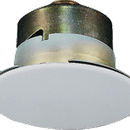Sealing around fire sprinklers in cathedral ceiling
I have a vaulted, insulated, cathedral ceiling in warm California (zone 3) and code required firesprinklers for my tiny guest house (5 total). My piping and sprinkler heads are installed in the center of my 2×12 bays, which will be filled with R-38 fiberglass batts. I have another R-18 of rigid insulation above the roof sheathing. Once insulation is in place, I will install drywall. The firesprinklers have covers for them (similar to photo) with fusible links that will open in extreme temperatures.
I read the article “Wasting Energy or Catching Fire” which recommends placing sprinklers in interior soffits, or interior walls, but this is not an option for me.
Has anyone had experience or recommendations on how to seal around these sprinkler heads & covers in a cathedral ceiling?
Thanks for any recommendations!
GBA Detail Library
A collection of one thousand construction details organized by climate and house part










Replies
Dan,
The best article I have seen on this topic is Abe Kruger's article in Home Energy magazine. Here is the link: Wasting Energy or Catching Fire.
Yes, I read that article and its recommendations to place sprinkler systems in an interior soffit or wall, similar to ductwork recommendations. However, I have very few interior walls, and the piping is already installed in the middle of my rafter bays, so I don't have that option here.
Any idea how to seal around these pipes or covers without risking the integrity of the cover's ability to drop and engage the fire suppression system in the event of a fire?
dense pack cellulose comes to mind
Hello Dan,
I have the same question as you, likely at the same stage of construction you were at, past the point of adding a soffit. How did you handle it?
I would assume that any air sealing that "glues in" the drop-away cover will be a no-go. If there's a way to seal around the pipe to the topside of the gypsum board, that might be plausible. But you're still quite likely to run into issues with the fire inspector; Joe wrote about it here:
BSI-060: Joe South Assemblies
https://www.buildingscience.com/documents/insights/bsi-060-joe-south-assemblies
The sprinkler heads and escutcheon plates need to be airtight where they penetrate the ceiling (Photograph 4). Easy, so just seal them. Not so fast. Were they tested “sealed” or “unsealed?” This matters a great deal to that “fairly complicated and typically stubborn creature.” [fire official] The manufacture of the sprinkler system has to sign off on this. Good luck. Or the “authority having jurisdiction.” Even more luck needed. Or the “architect of record” has to seal the drawing.
Sealing the sprinkler heads and escutcheon plates is the “right thing to do” but not often possible because they have not been tested in that configuration and an “exception” has to be granted. An even “better” right thing to do would be for the industry to test their stuff in the “right configuration” – the “sealed” configuration.
Thanks...I'm afraid I have very little knowledge in how the sprinklers work, which makes me cautious. Apparently there is a moving part to these concealed sprinklers as you mention. I *d0* want them to function as designed if needed.
Any moving assembly should be contained within the sprinkler assembly. You certainly don’t want to fill the sprinkler assembly housing with something like blown insulation though. At best, the insulation might act to delay the operation of the thermal fuse in the sprinkler. At worst, the sprinkler may jam and fail to operate properly.
I would think you could “box over” the sprinkler with polyiso similar to how recessed lights are done when doing air sealing work. This would leave an air space around the sprinkler assembly which should allow it to function normally.
Bill
Thanks Bill, that seems like a good solution.
I reached out to the manufacturer I plan to use (Uponor, email: [email protected]) and they responded with a nice set of PDF instructions to air seal their heads. Screenshots attached. I suggest you contact your manufacturer, and see if they offer similar?
That's good for applications where you have a vapour barrier.
Otherwise in interior ceilings, or non vapour barrier applications, you can tape the topside of the can with a flex tape, and then after drywall and paint (pray that the drywall boarders don't butcher the holes), fill the gap between the can and drywall with backer rod or a flexfoam like tremco exoair, or use an elastomeric sealant. Just make sure you trim the plaster or whatever you use around the can to get it planar with the ceiling, so your concealed cover plate can screw in tight up against the ceiling. It'll look better and perform better.
To the weary, this doesn't affect the performance of the sprinkler. The cover plate needs to be up against the ceiling as it has its own inlets to accept the heated gas to dislodge. The sprinkler bulb is within the can, so is unimpeded by the tape at the top of the can.
Also, in looking into this, I see there are cleanroom cover plates that come with a silicone gasket pre installed. Not sure how much more costly they are or how difficult they are to get. It certainly looks like an easier solution. So that's a potential option as well.
Jamie